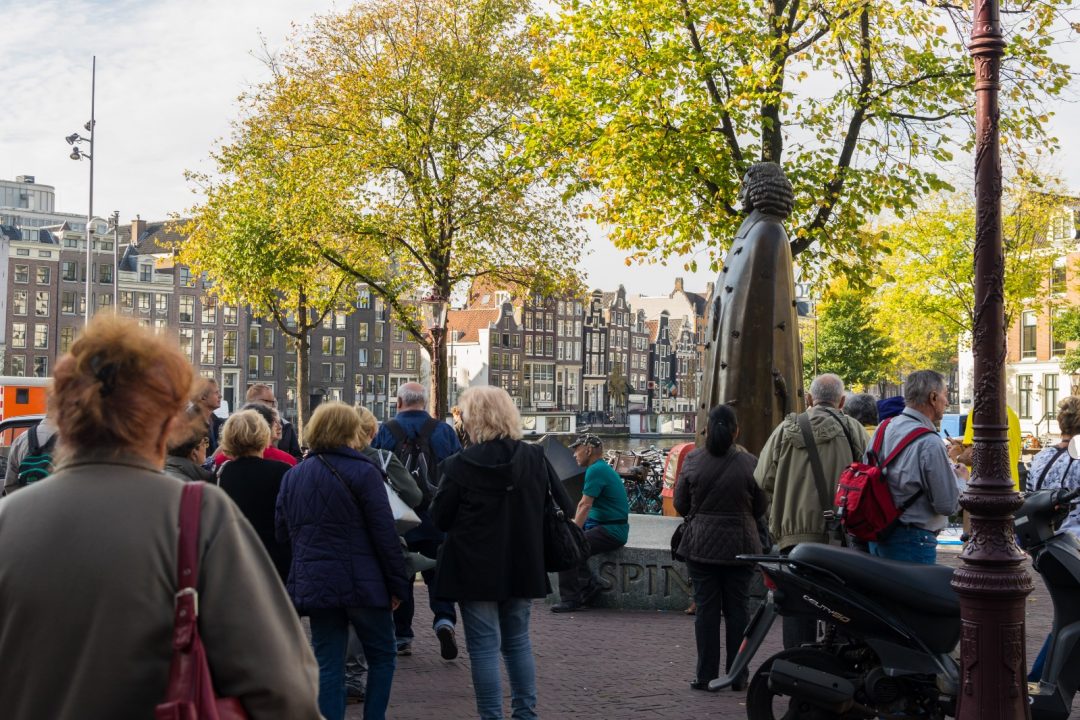Written by Sybrand Veeger
Baruch Spinoza: the name of the 17th-century, Dutch, daytime lens-grinder, and nighttime philosopher, of the excommunicated Amsterdam Jew, of a solitary yet dextrous lens-grinding body, of a joyful and infinitely thought-provoking mind. Baruch means the blessed, Spinoza, he who comes from a spiny place.
Baruch Spinoza: the blessed spirit from the spines.
Spinoza had one method for the making of telescopes and metaphysics – Euclidean geometry. One begins with a number of axioms, these are irreducible and self-evident truths about the world, to then deduce certain optical theorems, or philosophical propositions, that follow strictly from these truths, to determine the concavity, convexity, transparency, and opacity of what we can see, of what we can know.
What did he see? What did he know?
As preliminary work, he had to wipe off the foggy dualism left by the Cartesians, who thought that mind and matter were divinely connected through the work of an intervening God. The axioms then led the blessed telescope-maker to a different idea, to develop a clear and pristine metaphysical image.

Excommunication curse of Spinoza by the Amsterdam Jewish Community. Photo: Tjan Ho Lai
Axiom 1: God is Nature
First, he observed that God must be equal to nature. God, or nature, is the one and only substance constituting the world, it is everything that is – there is by definition nothing outside of it because what would be outside of it wouldn’t be. The oneness of the world, the identity of God and nature, constitutes Spinoza’s first theorem: monism.
For Spinoza, the craftsman, this meant that Jupiter and the telescope with which he observed it worked according to the same fundamental laws. For Spinoza, the metaphysician, it meant that the truth about the world and the mind with which he conceived it were fundamentally identical.
Axiom 2: God-Nature has Infinite Forms
Second, he saw that because God-Nature is absolutely infinite, it follows that it has infinite forms of expression. Merely two of these forms, which Spinoza calls attributes of God-Nature, are conceivable to us – thought and matter. Attributes are how God-Nature expresses itself and they are infinite in their quality as attributes. It follows that there is an infinite amount of infinite attributes: the limitless expressionism of God.
Spinoza observed that due to the existence of one substance only, “[t]he order and connection of ideas is the same as the order and connection of things” (7, 2, Ethics). Geometrically, and optically, attributes form a parallelogram of lines that never touch each other but express in different forms the one substance, God-Nature. There is a correspondence between attributes, in the sense that attributes always express the same thing, but there is no real causal interaction connecting them. Mind and matter never really touch, they run parallel, never perpendicular.
Axiom 3: God-Nature has Infinite Production
Third, Spinoza observed the work of God-Nature, it’s infinite production. If attributes are the forms of expression, then modes are the content of expression, what is expressed. Modes can be infinite, like, say, energy; and modes can be finite. Modes can be simple, like the asteroid, or can be complex enough to be self-conscious, like the human.
Spinoza noticed that he was one mode of God-Nature, operating through two parallel attributes, Spinoza as the craftsman, and Spinoza as the philosopher. Spinoza’s lens-grinding body, expressed through the attribute of extension; Spinoza’s metaphysical mind expressed through the attribute of thought. One mode of God-Nature, one individual, constituted by a body and a mind: two parallel expressions of the same thing.

Photo by Adrien Olichon
What We Can Know
Body and mind, therefore, are modes forming a complex, self-conscious union, an emergent mode – the human individual. My body is the expression of my individuality in God-Nature’s attribute of matter, whereas my mind is the expression in God-Nature’s attribute of thought. My mind is the idea of my body, and my body is the object or ideatum of my mind. Mind and body are lines that never touch, yet the order and connection of the idea, my spirit, is always parallel to the order and connection of the ideatum, my body. There is a perfect correspondence between the mental and the physical, neither comes a priori, like two mirrors facing each other in parallel, reflecting themselves to infinity.
Spinoza, daytime lens-grinder and nocturnal philosopher, did not only deduce the parallel relation between mind and body, but also lived according to it, personified it. He made parallelism an expressionist ethic.

Browsing through Spinoza’s biography at the Jewish Historical Museum. Photo: Tjan Ho Lai















